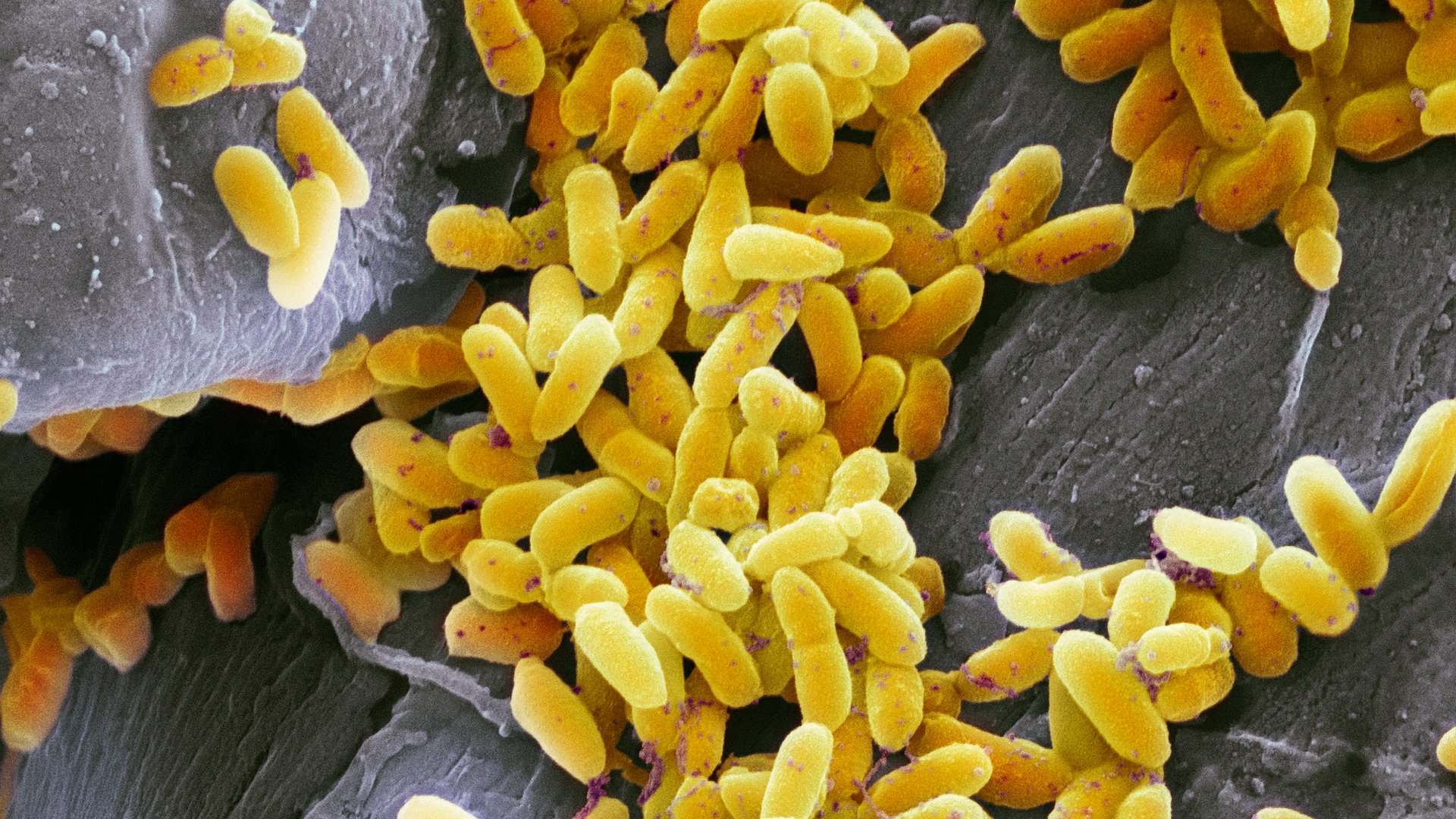A threat to humans and the environment
Due to our unrelenting use of plastics, there is a continuous influx of microplastics into the environment. Microplastics are normally smaller than 5mm and come to be by the everyday use of household products, the processing thereof and the making of new plastic products. Once in the environment, plastic slowly breaks apart into microplastics. These microplastics are not bio-degradable and hold onto toxins. This is not only disastrous for plant and animals. As microplastics enter the food chain – for example via plankton that eat the microplastics, and in turn get eaten by fish – microplastics even end up within our own bodies.
Sticky bacterial net
Therefore there is an active search for ways to remove microplastics from the environment. Unfortunately most of these microplastics are invisible to the naked eye and create quite the challenge. Biologists from the Hong Kong Polytechnic University (PolyU) have however been able to alter bacteria to create a sticky microplastic-net. The bacteria used, named Pseudomonas aeruginosa, makes a biofilm that catches microplastics in water and selectively releases it for recycling.
Catch…
A biofilm is a naturally occurring way bacteria live together to form a self-produced slime layer. The bacteria uses specific genes to make the slime layer, and these are the same genes the researchers amplified within the bacteria. So with the increase of these genes, more slime can be made. And more slime means an even stickier microplastic-net. Eventually so much microplastic was trapped that it pilled-up within the bacterial culture, and that it could simply be filtered out.
…and release
Apart from making more slime and therefore a stickier biofilm, the researchers also got the bacterial biofilm to degrade the slime at the desired moment. They created this “catch-and-release” mechanism, with which the bacteria would let go of the caught plastic when exposed to a specific substance. This way the plastic can be separated from the bacteria and even be reused.
Microplastic-free future?
This research is still very much in its infancy and its possible application in nature will have to be further sought out. One of these challenges is that P. aeruginosa can be pathogenic to humans. That means using this bacteria is logistically quite difficult. Luckily for us there are many bacterial species that make biofilms. These could, simply put, be used to implement this concept into practice. And who knows, bacteria might create a microplastic-free future!
Would you like to know more about how microbes are used to create a more eco-friendly future? Then visit Micropia or visit our website.
| https://www.sciencedirect.com/science/article/abs/pii/S1385894720332071 |
| https://www.theguardian.com/science/2021/apr/28/scientists-find-way-to-remove-polluting-microplastics-with-bacteria |

